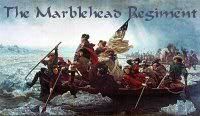Wednesday Hero


"Chief Airey was an Airman's Airman and one of the true pioneers for our service," said Gen. Norton Schwartz, Air Force Chief of Staff. "He was a warrior, an innovator, and a leader with vision well ahead of his time. His legacy lives today in the truly professional enlisted force we have serving our nation, and for that we owe him a debt of gratitude."
Chief Airey was born in Quincy, Mass., on December 13, 1923. At age eighteen, shortly after the bombing of Pearl Harbor on December, 7, 1941, Airey quit high school to enlist in the Army Air Forces on November 16, 1942. He later earned his high school equivalency certificate through off-duty study. During World War II he flew as a B-24 radio operator and additional duty aerial gunner. On his 28th mission, then-Technical Sergeant Airey and his fellow crewmen were shot down over Vienna, Austria, captured, and held prisoner by the German air force from July 1944 to May 1945. During his time as a prisoner of war he worked tirelessly to meet the basic needs of fellow prisoners, even through a 90-day forced march.
Chief Airey held the top enlisted from April 3, 1967 to July 31, 1969. During his tenure he worked to change loan establishments charging exorbitant rates outside the air base gates and to improve low retention during the Vietnam Conflict. Chief Airey also led a team that laid the foundation for the Weighted Airman Promotion System, a system that has stood the test of time and which is still in use today. He also advocated for an Air Force-level Senior Noncommissioned Officer Academy. His vision became reality when the academy opened in 1973, becoming the capstone in the development of Air Force Senior NCOs. Chief Airey retired August 1, 1970. He continued advocating for Airmen's rights by serving on the boards of numerous Air Force and enlisted professional military organizations throughout the years. He was a member of the Board of Trustees for the Airmen Memorial Museum, a member of the Air Force Memorial Foundation and the Air University Foundation.
On the north wall of the Air Force Memorial in Washington D.C., Chief Airey's thoughts on Airmen are immortalized, "When I think of the enlisted force, I see dedication, determination, loyalty and valor." The Air Force Association honored Airey with its Lifetime Achievement Award in 2007.
Chief Airey passed away on March 11, 2009 at his home in Panama City, Florida
These brave men and women sacrifice so much in their lives so that others may enjoy the freedoms we get to enjoy everyday. For that, I am proud to call them Hero.
We Should Not Only Mourn These Men And Women Who Died, We Should Also Thank God That Such People Lived
This post is part of the Wednesday Hero Blogroll. For more information about Wednesday Hero, or if you would like to post it on your site, you can go here.

Labels: Air Force, Wednesday Hero, WWII
 I Remember
I Remember



















































